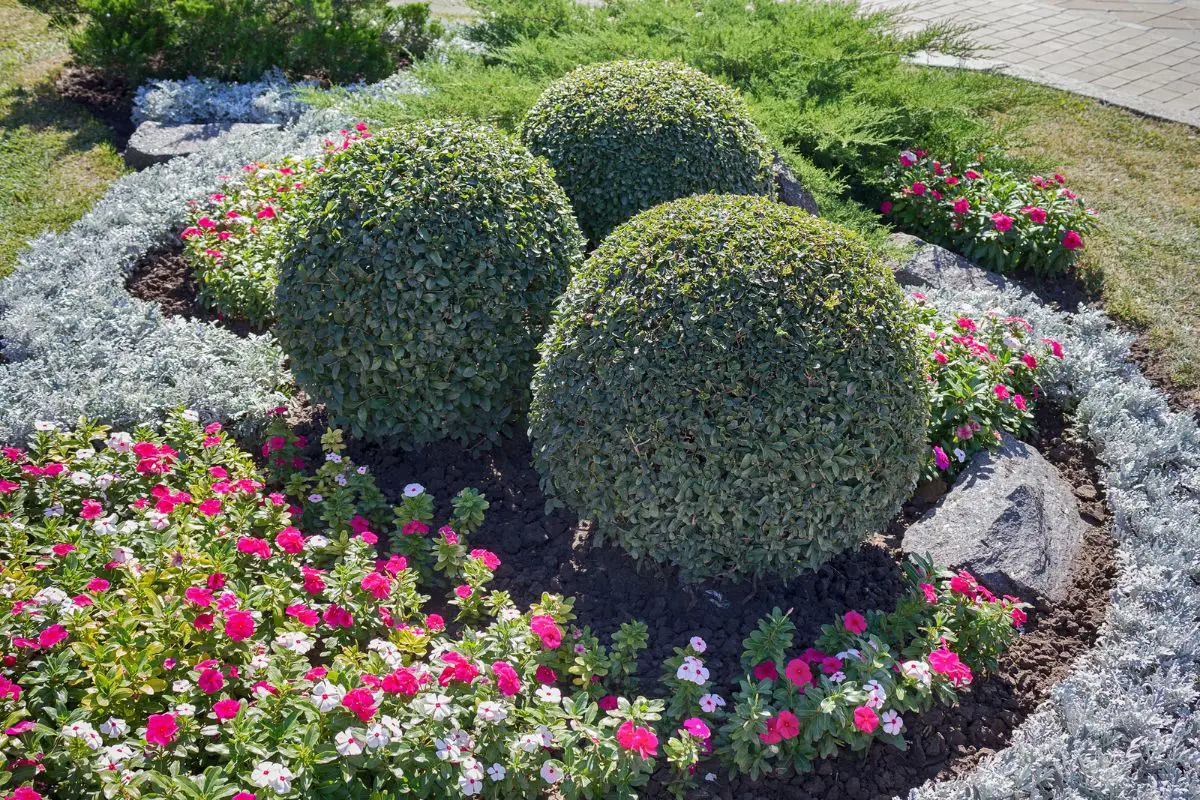The common boxwood is frequently grown as a shrub or cultivated as a polished hedge in ornamental gardens. This hardy plant, which is scientifically known as Buxus sempervirens, is a prime choice for many gardeners. Perfect for landscaping, for creating a shade garden, and for serving as a natural fence, Box is one of the most useful perennial plants for modern gardening.
A slow-growing shrub with evergreen foliage, the common boxwood complements the features of many flowering and low maintenance plants. As a green backdrop, boxwood hedges can be edged with colorful flower heads, delicate herbs, or taller plants that may need low-growing companions for the increased stability of bottom substrates.
Companion plants are remarkably important aspects of boxwood landscaping. Apart from aiding in maintaining the visual cohesiveness and appeal of boxwood shrubs, they can increase a garden’s diversity profile and enhance its ecological services.
Ideal companion plants for common boxwood varieties include flowering plants that can complement the appearance of dark leaves. Bursts of color from vibrant flowers, such as those of spring-blooming shrubs and bulbs, should add eye-catching contrast.
If you’re looking for what to plant in front of boxwoods, some good choices include azaleas, garden Phlox, peonies, and roses.
Flowering Plants to Grow Around Boxwood Shrubs
The best boxwood companion plants are those that share many of its basic requirements. Ideally, the perennials that you plant in front of, around, or close to boxwood should favor well drained soil.
Boxwoods tend to thrive best in full sun. You can learn more about how to care for boxwoods on our blog.
Keep in mind, however, that the full height of established boxwoods may cast nearby plants in partial or full shade.
Here’s what to plant with boxwoods:
Hosta (Hosta spp.)
Companion planting with hosta cultivars is always a great idea as these plants are easy to maintain. Unlike other plants that may require full sun exposure to thrive, the dark to light green leaves of hostas can survive in partial shade. Full sun exposure, especially from afternoon sun, may scorch their tissues and cause them to die back.
Hostas are some of the easy plants that go well with boxwoods and can be situated along the base of a boxwood shrub.
The color combinations of their variegated foliage should provide a nice contrast to the evergreen leaves of boxwood. Given proper conditions for growth, hostas should bloom in spring to summer.
Creeping Thyme (Thymus serpyllum)
Creeping thyme is a fantastic perennial to grow as a filler or ground cover plant in between stands of boxwood. Both species are highly adaptable to a variety of soil conditions and are moderately drought tolerant. They also favor similar light conditions, but thyme is more likely to tolerate being cast in partial shade.
The white, pink, or purple flowers of creeping thyme should add attractive pops of color above a soft carpet of fragrant leaves. Many boxwood varieties should benefit from being planted close to thyme as its blooms attract beneficial insects.
Creeping Juniper (Juniperus horizontalis)
Creeping juniper is a great winter companion for boxwoods. As both plants can tolerate cool winter conditions, they can serve as year-round focal points of color and texture in northern gardens.
As a ground cover plant, creeping juniper can produce a carpet of blue-green foliage that complements the darker leaves of boxwoods. Tolerant of light shade, it can be used to fill in the gaps between low hedges.
Astilbe (Astilbe spp.)
Astilbe’s preference for moist, well-draining substrates makes it an ideal companion for boxwoods.
Its feathery plumes of pink, red, purple, or white flowers provide a nice contrast to simple and dark boxwood leaves that stay green all year round. Cold hardy and pest resistant, this plant is a fine choice for combination gardens.
Brunnera (Brunnera spp.)
Brunnera species are low growing plants that can easily thrive between shrubs which provide protection from the elements. Their delicate blooms, with colors ranging from light to deep blue, grow to just 1.5 feet tall.
As they favor partly shaded conditions, they are suitable for growth along the base of tall boxwood plants.
Pulmonaria (Pulmonaria spp.)
Pulmonaria species are flowering plants with typically speckled or variegated foliage.
Many common cultivars have purple flowers that attract many types of pollinators and beneficial insects to ornamental gardens. These can look especially pretty close to the base of a boxwood shrub, which has dark and stiff features in comparison.
Ornamental Grasses
The evergreen foliage of many ornamental and cold hardy grasses make for a stunning garden with eye-catching textures that last through the year.
Those which thrive best in slightly acidic, well draining, and fertile substrates should grow best next to many varieties of boxwoods.
Lady’s Mantle (Alchemilla mollis)
Growing boxwood next to Lady’s mantle draws attention to the stark differences of their leaves. While the foliage of lady’s mantle is light-colored, scallop-shaped, and semi-rounded, those of boxwood are small, deep green, and have simple margins.
In late spring to early summer, lady’s mantle produces yellow green flower heads that can significantly brighten up just about any type of garden. Most plants can benefit from its bloom period as it brings many pollinators to the garden.
Azaleas (Rhododendron spp.)
Azalea shrubs are a remarkable addition to an ornamental garden. These annuals are perfect for a mass planting or as an accent to well-established and pruned hedges.
In spring, the pink, red, or white flowers create a visual spectacle that pleasantly contrasts the deep green color of boxwoods.
Azaleas can be grown directly next to or in front of boxwood as they favor slightly acidic and well-draining substrates. They have shallow root systems that prevent them from heavily competing with boxwoods for nutrients.
Easy to plant and low maintenance, they come in varieties that grow to a mature height of 3-10 feet tall.
Garden Phlox (Phlox paniculata)
A lovely species to plant in front of boxwoods, garden phlox is known for its fragrant and delicate blooms. It is perfect for adding color to a cottage garden and for miniature landscaping projects.
Garden phlox, which can survive under partial sun exposure, can be grown in containers at the base of taller boxwoods. It can also be planted directly into the ground close to the bottom of well-established shrubs.
If you’re interested in adding a new plant to your ornamental garden, this is definitely one of the best species to consider.
Heuchera (Heuchera spp.)
In spring and summer, heuchera cultivars produce bell-shaped blooms with varying shades of red, coral, pink, and white.
In the absence of these blooms, however, these plants continue to be remarkably attractive due to the quirky colors and highly textural appearance of their large leaves. To bring out their best features, try planting them close to boxwoods.
Evergreen, heuchera is hardy to USDA zones 4-9. Its tolerance for the cold makes it an ideal companion plant for boxwood in winter gardens. Many gardeners praise it as one of the best perennials for companion plantings in temperate regions.
Daffodils (Narcissus spp.)
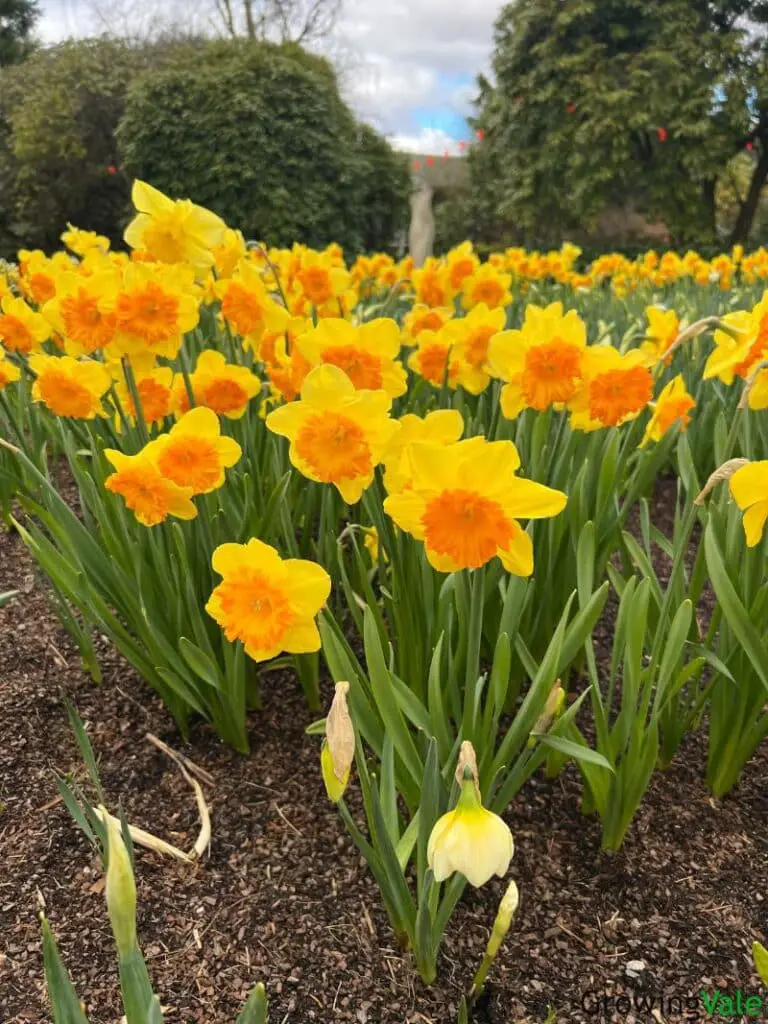
Daffodils are perennial bulbs that are grown for their eye-catching flowers. These come in various shades of white, yellow, and orange.
Most species and cultivars of this plant bloom at the start of spring (when boxwood may still be dormant), signaling the onset of warming temperatures. They are perfect for adding pops of color to boxwood gardens.
Tulips (Tulipa spp.)
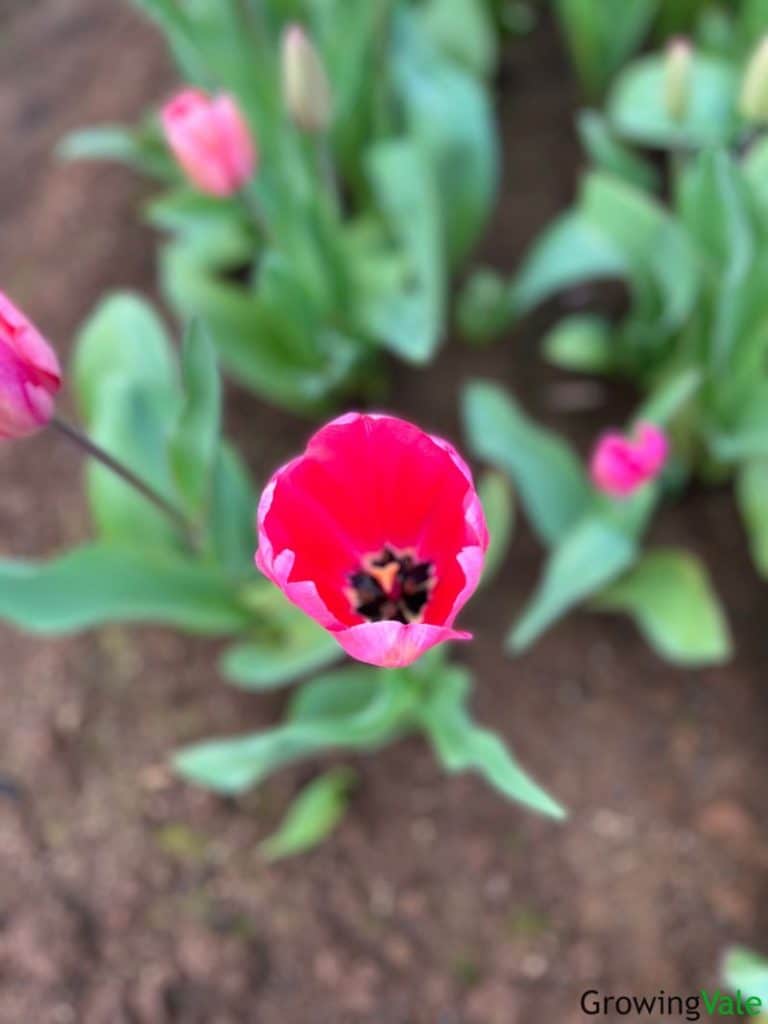
With flowers that come in all sorts of colors and sizes, tulips are some of the most coveted flowering bulbs.
In many temperate zones, gardeners consider them a crucial addition to the quintessential spring garden. Their preference for well-draining substrates and tolerance for light shade make them a fine companion plant for boxwoods.
Peonies (Paeonia spp.)
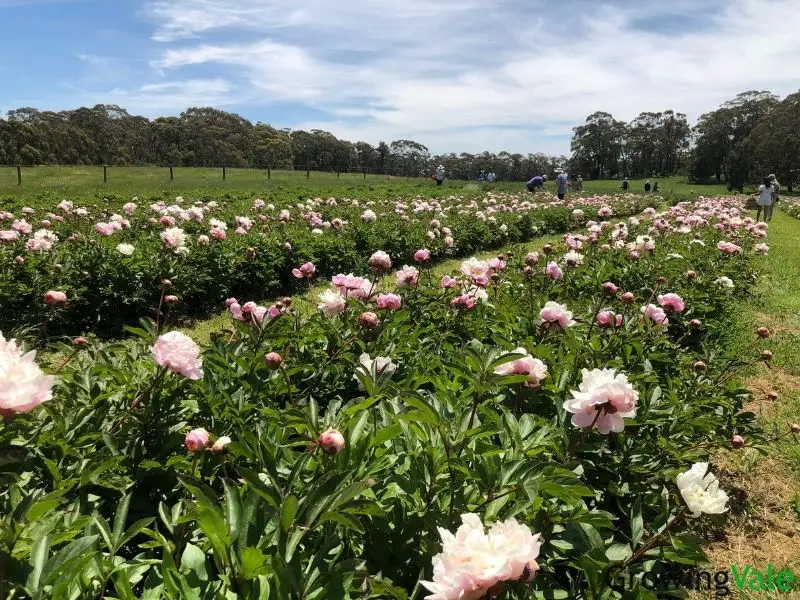
Planting peonies in front of boxwoods is always a great idea because these flowering perennials complement the needs of many temperate shrubs. The seasonal interest provided by their colorful blooms can drastically improve the visual appeal of a spring garden.
Peonies come in herbs and shrubs that can be utilized for all sorts of landscaping projects. You may plant these directly in front of boxwoods, provided they are afforded with a few hours of direct sun per day.
In proper conditions, these plants produce stunning flowers with colors ranging from all shades of yellow to white and pink to red.
Bleeding Hearts (Dicentra spp.)
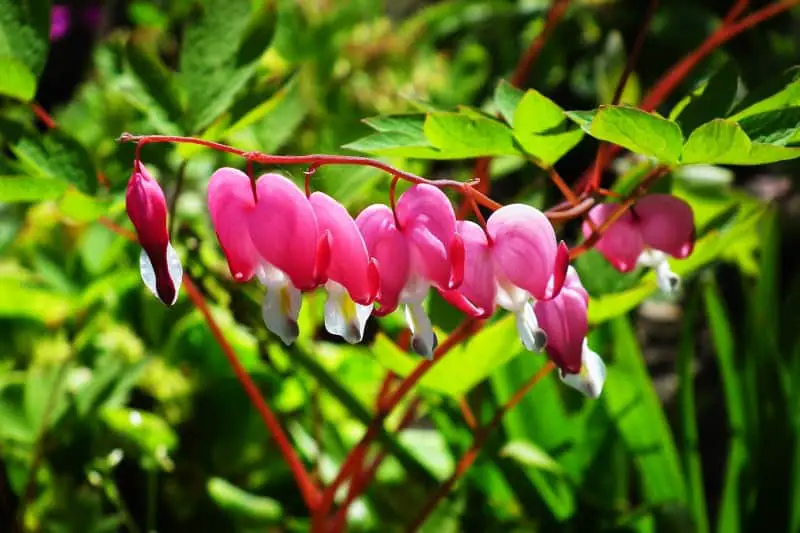
Native to East Asia and North America, bleeding hearts are herbaceous plants with uniquely shaped flowers. They grow to an average of about 3 feet tall, complementing the height of mature boxwoods. Their finely divided leaves, which may resemble the appearance of ferns, provides a nice textural contrast to the simple leaves of boxwood.
To draw attention to your bleeding hearts, particularly during their bloom period, plant them in an area where their blooms can be provided with a dark backdrop of boxwood leaves. The heavy contrast in color should accentuate the delicate hues and structures of their unusual flowers.
Marigolds (Tagetes spp.)
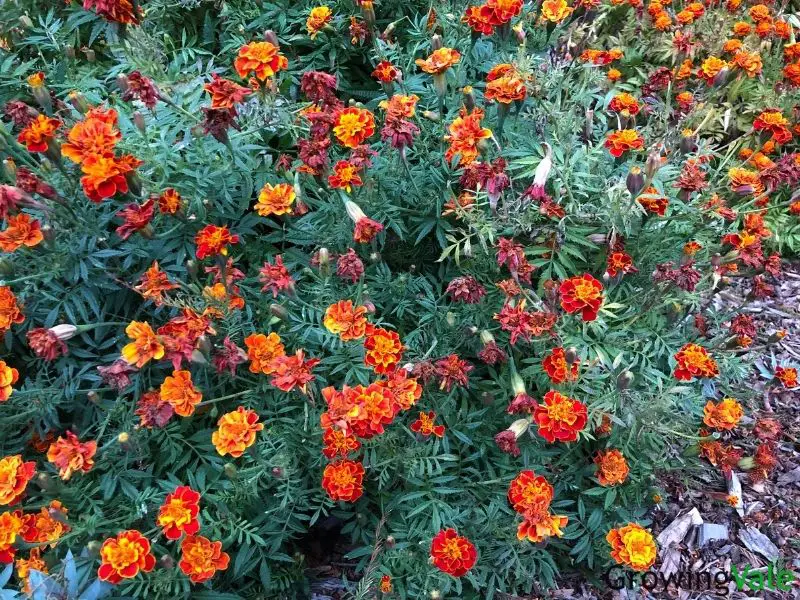
As marigolds are the classic addition to a pest free garden, they are often planted in key areas where their fragrant and vivid flowers can draw a favorable number of beneficial insects. Often grown as annuals, these tropical plants are ideal companions for boxwoods in warmer temperate zones.
When cultivated in proper conditions, marigolds tend to bloom in the summer. The yellow to orange hues of their heavily-petaled flower heads provide an eye-catching contrast to the deep green shade of boxwood leaves.
Petunias (Petunia spp.)
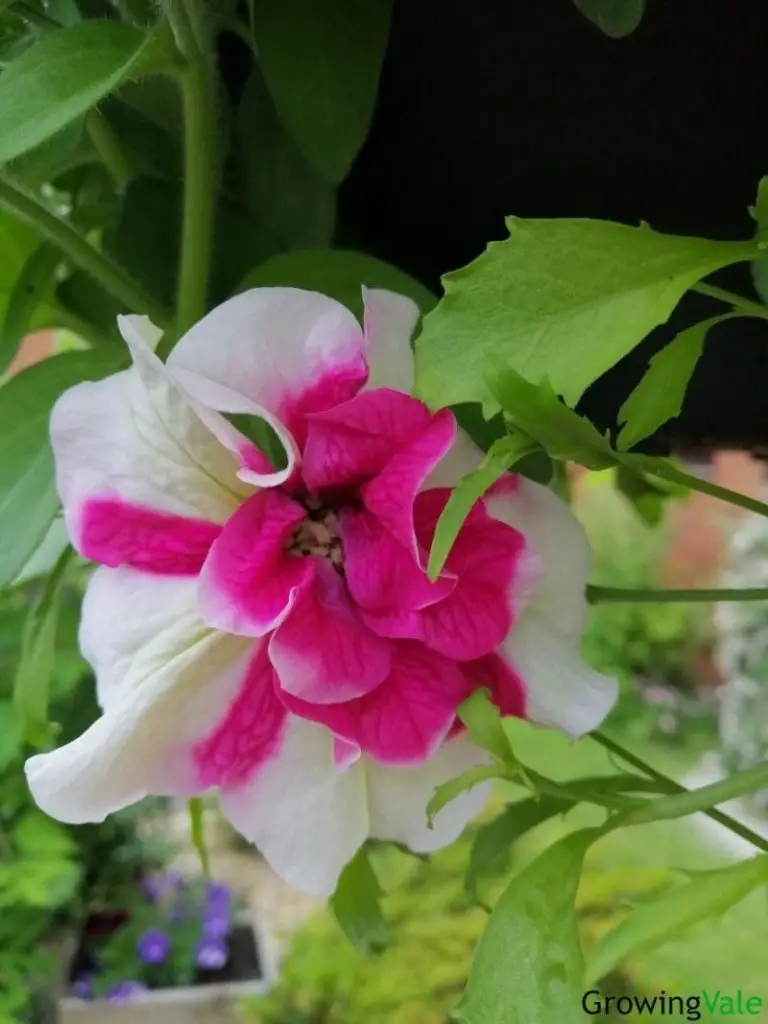
If the base of your boxwood hedge is in need of some pops of purple, pink, or white flowers, try cultivating a few stands of petunias.
These flowering annuals are some of the most rewarding plants to cultivate year after year as they produce generous amounts of beautiful yet understated flowers.
Hydrangeas (Hydrangea spp.)
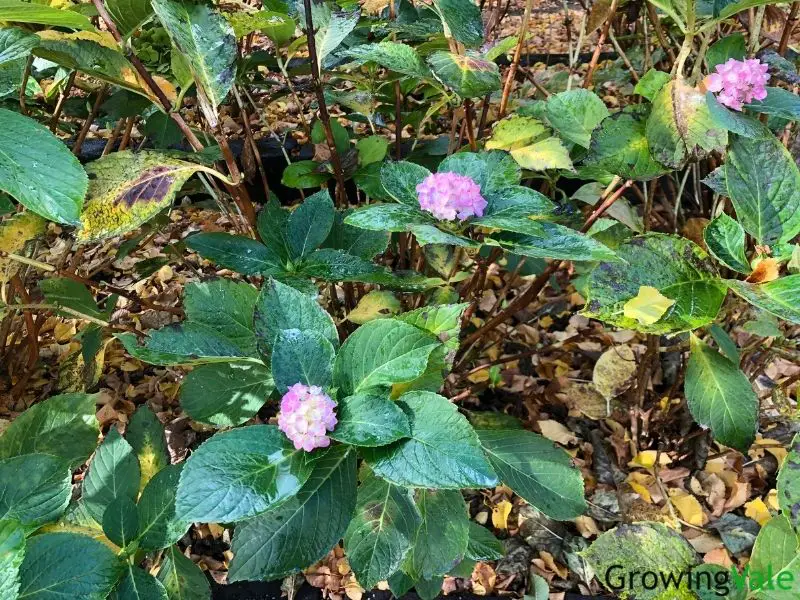
Although hydrangeas can be cultivated to grow as natural fences in their own right, they are some of the best perennial companions for mature boxwoods.
Known for their bouquet-like blooms, which develop blue or pink petals depending on the availability of nutrients in the soil, they are low-maintenance and fairly disease-resistant once they are well-established.
If you’re interested in trying your hand at cultivating these boxwood companions, look for award winning cultivars of big-leaf hydrangeas. Some hydrangeas have remarkable flowers, can tolerate a wide range of soil types, and may thrive in slightly acidic to slightly basic soil substrates.
Roses (Rosa spp.)
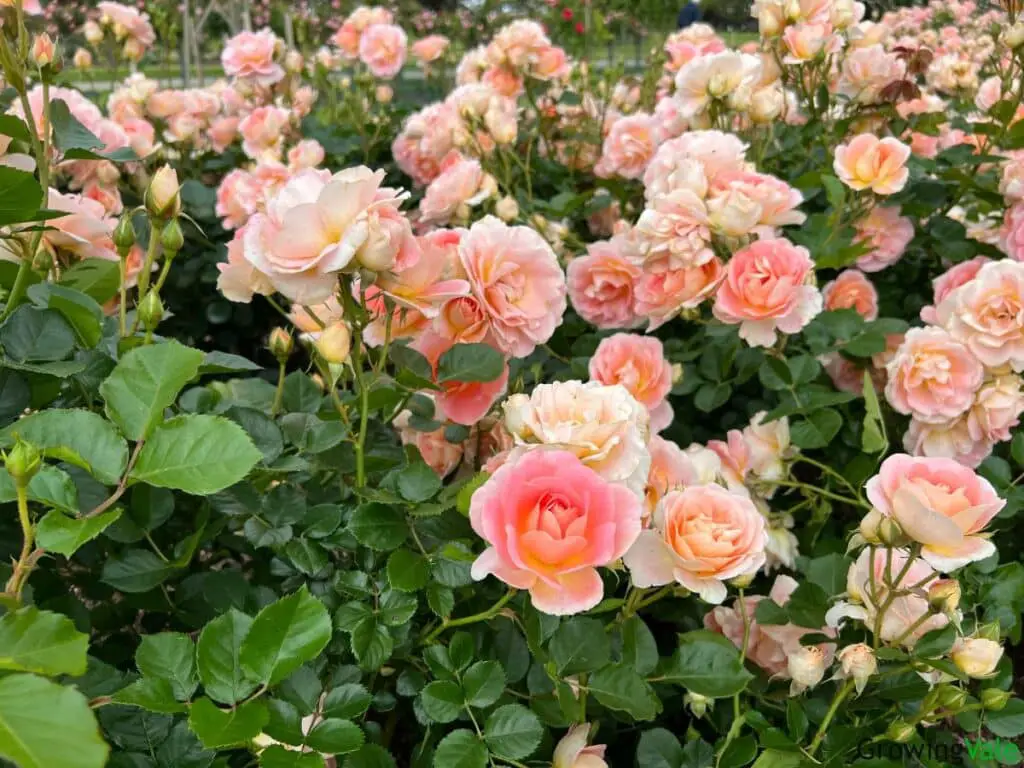
Roses are some of the most eye-catching companions for boxwoods due to their vivid flowers and their ease of care. Plant these in front of boxwoods, preferably in a spot where their leaves are afforded with a few hours of direct sun per day.
For best flowering rates during the peak bloom period, regularly fertilize your roses. The provision of supplementary nutrients should also benefit boxwoods during their growth period.
New Guinea Impatiens (Impatiens hawkeri)
If the base of your boxwood hedge looks unfavorably bare, consider planting a few clumps of New Guinea impatiens. This charming annual will be grateful for the light shade and protection provided by larger boxwoods.
Aim to plant them out once the final winter frosts have passed. In just a few weeks, healthy plantlets should begin to produce colorful buds.
Blazing Star (Liatris spicata)
The blazing star, a perennial species that is known for its plume-like, purple, and late summer inflorescences, is a great companion for boxwoods.
Able to withstand cold temperatures and adaptable to many soil types, it is a low-maintenance and pest-resistant choice. Just make sure to situate its stands in an area where it can receive direct sun for maximum bloom production.
Begonia (Begonia spp.)
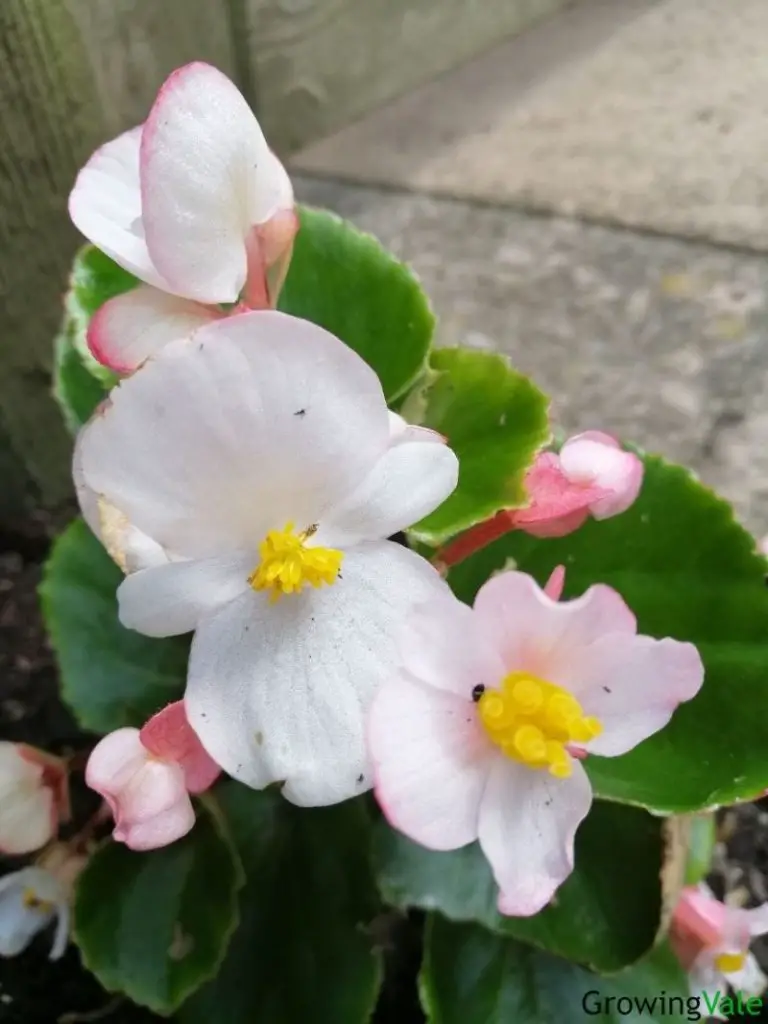
Begonias are ideal companions for taller box hedges as they are low-maintenance and can survive in light shade. The contrast provided by their foliage, which comes in just about all shades of brown, green, silver, and red, draws attention to the simple beauty of boxwoods.
If you’re lucky, your begonias should produce charming inflorescences of pastel blooms in summer. The showy flowers should significantly brighten up and naturalize the base of your pruned shrubs and hedges.
What You Should Not Plant Next to Boxwood Hedges
As the common boxwood can thrive in a wide range of soil types and ambient conditions, it is generally compatible with hundreds of types of plants. However, there are some species that may not grow favorably in its shade or may compete with its roots, diminishing its capacity for spread and vertical growth.
Moreover, some plants favor conditions that may kill the root systems of boxwood hedges.
Below are some examples of some bad companion plants that may not be suitable for the common boxwood:
- Invasive species and vines with the capacity to self-seed and spread via underground networks of rhizomes (e.g., English ivy, Japanese knot weed, bamboo, aggressive mint hybrids)
- Tall trees that may cast common boxwood in full shade
- Water-loving plants such as Joe Pye weed and marsh marigold
- Plants that produce allelopathic compounds that can destroy the root systems of nearby plants (e.g., eucalyptus, black walnut)
*image by DmyTo/depositphotos

